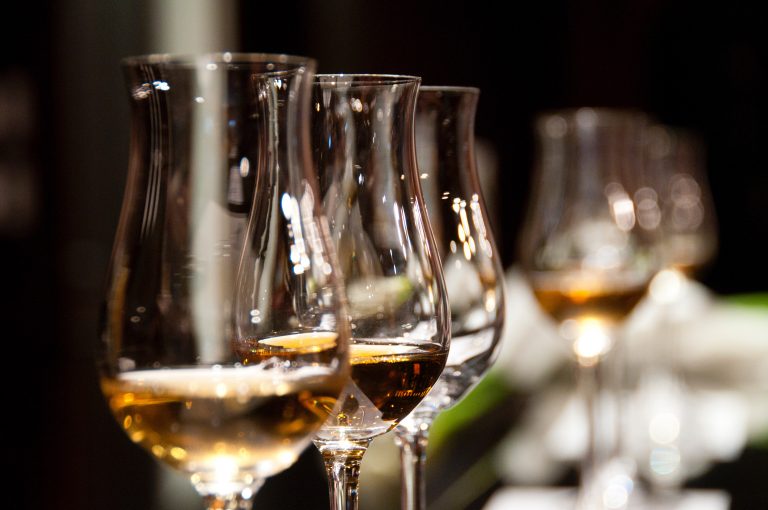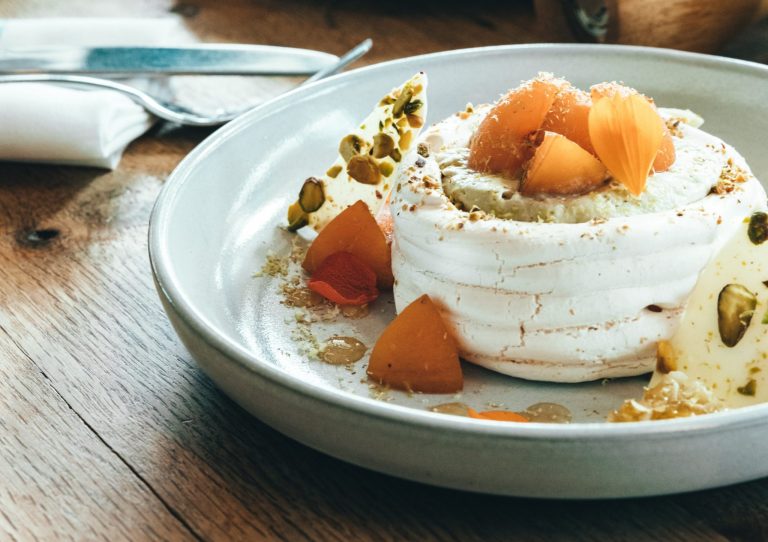Ice wine… is that just wine with ice blocks in it? Or wine that’s been left in the freezer too long? Nope. It’s the sweetest thing to ever come from a harsh winter climate.
If you’ve never heard of ice wine before or are fascinated by the idea of it, this guide will tell you everything you need to know about it, including how it’s made, what it’s like, and where to buy it.
Grab your gloves, it’s about to get chilly!
Jump To a Section Below
What Is Ice Wine?

Ice wine is a unique dessert wine made from frozen grapes. Out of the cold, crop-destroying snowstorms of the northernmost parts of the world comes the happiest accident in winemaking history; ice wine.
Distillers discovered ice wine when they were forced to harvest grapes that had been frozen in their sub-zero climate, and discovered that they created a unique, sweet wine with amazing flavour. Ice wines soon became very popular in the regions they were produced and have recently exploded into international acclaim.
What Is Special About Ice Wine?
Ice wine is special due to the circumstances in which the grapes are harvested. It can only be produced in naturally freezing (literally) climates and grapes are picked frozen on the vine. Ice wine can therefore be difficult to get your hands on, especially if you don’t live in the northern hemisphere. Ice wine has to be imported to most countries from its place of origin, making it rare and highly sought after.
Where Is Ice Wine From?
As ice wine can only be made under specific climate conditions, there are only a handful of places that can produce it. Ice wine is originally from Germany, named and popularized as Eiswein during the 1800s in the Rheingau region. Ice wine is now made in several countries, but distilleries are mostly found in Canada, Germany, Austria, and some parts of northern China.
How Is Ice Wine Made?
Ice wine is made by harvesting frozen grapes directly off of the vine and processing them while frozen. The grapes used to produce ice wines typically include Cabernet Franc, Merlot, Gewürztraminer, Riesling, Grüner Veltliner, Chenin Blanc, and Vidal Blanc. Ice wine generally takes 3-5 times the amount of grapes as usual wine (not to mention that each icy marble is handpicked!)
The distilling process is tricky and precise. The ideal distilling temperature is -7º C and the hard frozen grapes can be very difficult to crush- especially with often used authentic vintage presses. From here only about a fifth of the liquid is used to make ice wine. The juice is fermented for three to six months, due to its incredible sweetness (from 32 to 46 Brix).
Wines made with commercially frozen grapes cannot, in most countries, legally be called ice wine. You’ll see these knock-offs labelled as iced wine or simply dessert wine.
What Does Ice Wine Taste Like?
Ice wine is a super sweet dessert wine with fruity flavours and high acidity. Sparkling ice wine is also a delicious way to experience the unique flavour, as the bubbles cut through the sweetness beautifully.
Is Ice Wine Sweet Or Dry?
Ice wine is an ultra-sweet wine, with a sugar content higher than most sodas. It has twice the sugar content of Coca-Cola! If you’re hesitant about the sugary taste, it’s well balanced by its high acidity content. The tartness of newer wine is a relief to the palate after the sweet flavours of the wine.
Iced wine that has been aged for longer is sweeter, with a syrupy texture and notes of hazelnut, maple, and molasses.
What Food To Pair With Ice Wine

Ice wine is best paired with food with a high-fat content, which helps balance out sweetness and compliments the fruity flavours. If you’re looking for something savoury, soft cheeses work beautifully with ice wine and make an excellent after-dinner treat.
Ice wines are best served as a dessert, with a dessert. Subtle sweet vanilla notes in sponge cake, cheesecake, and ice cream compliment the wine beautifully. Creamy textures of desserts like panna cotta and mousse also pair well with ice wine.
When Should I Drink Ice Wine?
Ice wine is best served after or between meals, as its sweetness and unique flavour demand all of your palate’s attention. Serve ice wine chilled in small quantities, this is a wine that packs a huge punch in every sip.
How Expensive Is Ice Wine?
Ice wines are expensive, due to the complex distillery process, large amounts of grapes required, and highly specific climate conditions. The market is also still pretty niche, so most distilleries charge a premium to turn a profit.
If you live in a region that produces ice wine you are likely to pay at least $30 for a bottle. If you live elsewhere the price goes up due to the cost of importing and you can expect to spend $100 on a bottle of good wine.
What Is Good Ice Wine?
First, make sure you’re dealing with an authentic ice wine. The region of production is usually a good clue- you’re unlikely to find real ice wine produced in Florida for example. Keep an eye out for wines labeled ‘iced wine’ or ‘Riesling Ice’, as these are produced with commercially frozen grapes and come at a much cheaper price. Most countries require disclosure about the authenticity of ice wine, so it’s a big help in finding a high-quality product.
Ice wine from Canada will usually be authentic but at a more affordable price range. Premium ice wines come from Germany, fetching a higher price but providing you with the sweet taste of hundreds of years of wine-making history.
Now you know all about this viticulture phenomenon, you can try it out for yourself. You may just find that you’ve discovered a new favourite fruit of the vine!

Born amidst the rolling vineyards of Napa Valley, Chloe’s love for wine was instilled from a young age. This passion led her to the picturesque wine regions of France, where she immersed herself in the rich wine culture and traditions.
Chloe’s dedication to the craft culminated in her becoming a wine sommelier, a testament to her deep knowledge and appreciation for wines.